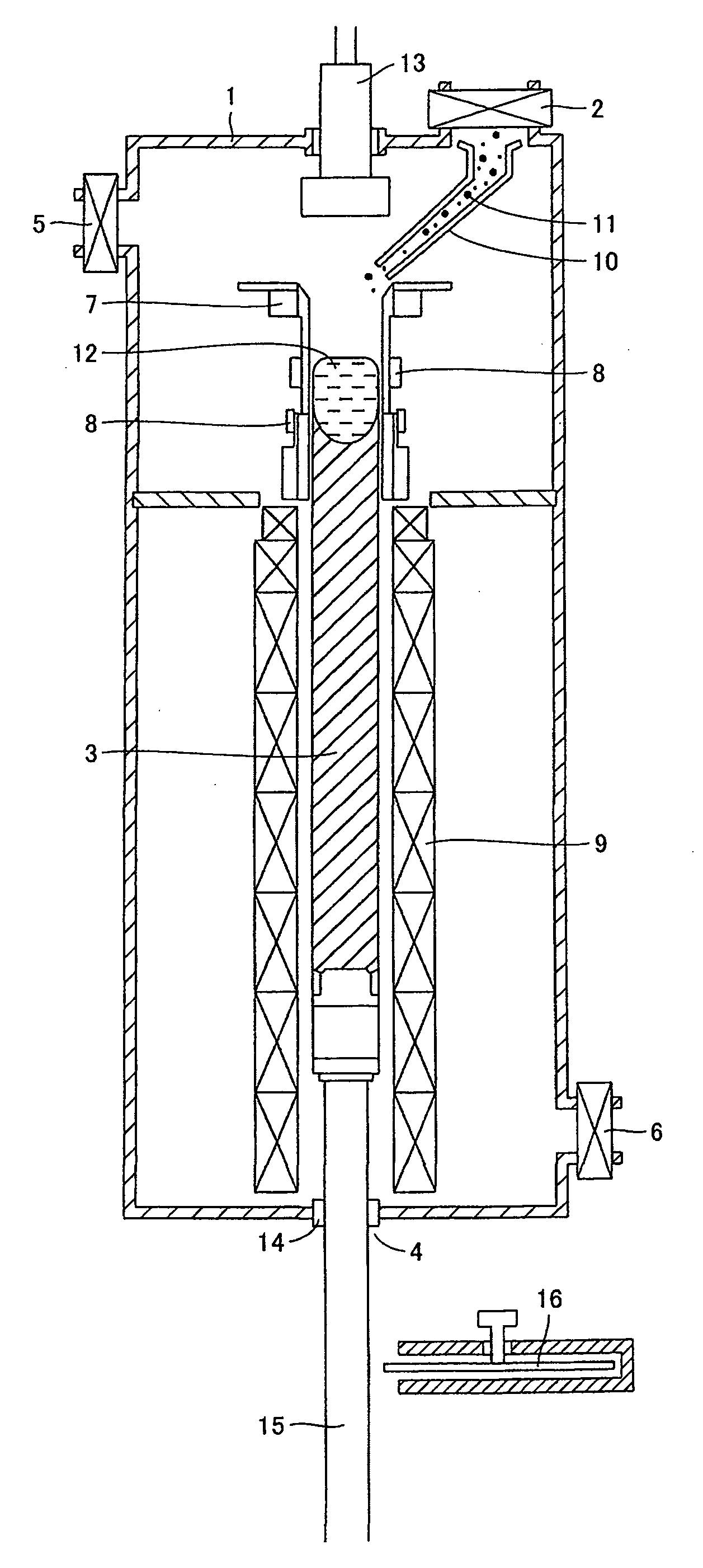Casting method for polycrystalline silicon
a casting method and polycrystalline silicon technology, applied in the direction of polycrystalline material growth, crystal growth process, chemistry apparatus and processes, etc., can solve the problems of increasing the production cost of solar cells, increasing the production cost of single crystal silicon, so as to suppress the growth of the chill layer, reduce the current value, and delay the initiation of solidification
- Summary
- Abstract
- Description
- Claims
- Application Information
AI Technical Summary
Benefits of technology
Problems solved by technology
Method used
Image
Examples
examples
[0057]To ascertain the effects of the present invention, we have cast polycrystalline silicon and evaluated its conversion efficiency as a solar cell.
[0058]Using an electromagnetic casting furnace shown in the aforementioned FIG. 1, a silicon ingot intended as a source material for a solar cell substrate was cast with a square cross section of 350 mm in side length.
[0059]The comparative examples, Test Nos. T1-T4, were at the time of casting given a current value of 6000 A and a frequency of 12 kHz for the alternating current applied on the induction coil. Moreover, Test No. T5, an inventive example of the present invention, was given a current value of 4500 A and a frequency of 25 kHz for the alternating current applied on the induction coil, while Test Nos. T6-T8, inventive examples, were given a current value of 4000 A and a frequency of 30 kHz for the alternating current at the time of casting. Apart from the current value and the frequency of the applied alternating current, bot...
PUM
| Property | Measurement | Unit |
|---|---|---|
| frequency | aaaaa | aaaaa |
| side length | aaaaa | aaaaa |
| side length | aaaaa | aaaaa |
Abstract
Description
Claims
Application Information
 Login to View More
Login to View More - R&D
- Intellectual Property
- Life Sciences
- Materials
- Tech Scout
- Unparalleled Data Quality
- Higher Quality Content
- 60% Fewer Hallucinations
Browse by: Latest US Patents, China's latest patents, Technical Efficacy Thesaurus, Application Domain, Technology Topic, Popular Technical Reports.
© 2025 PatSnap. All rights reserved.Legal|Privacy policy|Modern Slavery Act Transparency Statement|Sitemap|About US| Contact US: help@patsnap.com



